Please remember that the workshops will be held live. Check the schedule in your locality here
Below, scroll right and left to find detailed information on each workshop.
This mtDNA workshop is designed for participants with a foundational understanding of mitochondrial DNA analysis. Rather than covering basic concepts, we will focus on advanced topics to make the most of our limited time together.
To support newcomers, we will provide introductory video materials prior to the summer school covering the essential principles of forensic mtDNA analysis. We kindly ask participants unfamiliar with these basics to watch the videos in advance to ensure they are prepared for the workshop content.
The workshop will focus on:
-
Various MPS-based methods (PCR, WGS, Capture)
-
Interpretation of mitotypes using two approaches, EMPOP and MitoFREQ
-
Presentation of practical cases and demonstration of results interpretation
-
Active involvement of participants through interactive elements


INTENDED AUDIENCE
-
Caseworkers
-
Scientists
-
Students
LEARNING OUTCOME
-
Understand the most relevant forensic applications of mtDNA analysis
-
Focus: new EMPOP Release 14, detection of mixtures observed in SNP analyses, alternative mitogenome database searches
-
We offer to present/discuss your examples
SOFTWARE TOOLS
-
EMPOP/SAM2
-
EMMA2
-
MitoFREQ
MAXIMUM NUMBER OF PARTICIPANTS
50
PROGRAM
|
Time schedule (CEST) |
Subject |
|
13:00-13.05 |
Welcome and Introduction |
|
13.05-13.50 |
PCR-based MPS lab methods and data analysis - WP |
|
13.50-14.35 |
WGS and capture-based MPS lab methods and data analysis - CM |
|
14.35-14.45 |
Break |
|
14.45-15.15 |
*Mitotype interpretation using EMPOP - WP |
|
15.15-15.45 |
*Mitotype interpretation using MitoFREQ - CM |
|
15.45-15.55 |
Break |
|
15.55-16.25 |
*mtDNA interpretation in hair (case example) - WP |
|
16.25-16.55 |
*mtDNA interpretation in bone (case example) - CM |
|
16.55-17.00 |
Wrap-up - End of program |
* interactive involvement by participants
Program WS 1 (pdf)
This workshop includes an introduction to the interpretation of DNA mixtures and explanation of likelihood ratio calculations using EuroForMix/DNAStatistX. Hands-on exercises will be performed using the latest versions of EuroForMix and DNAStatistX using provided exercises. To facilitate, we will provide instructions to enable users to download the freely available software onto their computers beforehand. How to interpret the results as well as how to report the results will be discussed. The aim of the workshop is to provide sufficient information and support so that users will be able to run EuroForMix and DNAStatistX software and to understand and report the results.


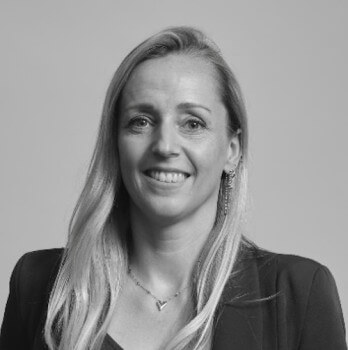
INTENDED AUDIENCE
- Anyone interested in probabilistic genotyping software to aid in the evaluation of mixed DNA profiles can attend, including DNA reporting officers, DNA scientists, DNA analysts, DNA technical leaders, laboratory directors, attorneys and consultants.
- The workshop is aimed toward an audience familiar with the issues surrounding complex DNA mixture interpretation and having some experience with statistical calculations.
LEARNING OUTCOME
- Understanding of likelihood ratio principles and application to autosomal capillary electrophoresis generated mixture profiles.
- Hands-on experience using EuroForMix and DNAStatistX for weight of evidence calculations.
- Knowledge on how to report the results to court.
SOFTWARE TOOLS
- EuroForMix latest version
- DNAStatistX stand-alone latest version
MAXIMUM NUMBER OF PARTICIPANTS
75
PROGRAM
| Time schedule (CEST) | Subject | |
| 5min | 8:00-8:05h | Welcome and introduction to the course. |
| 20min | 8:05-8:25h | Introduction to the interpretation of DNA mixtures. |
| 60min | 8:25-9:25h | Likelihood ratio calculations using EuroForMix/ DNAStatistX. Incl. summary of functionalities. |
| 15min | 9.25-9.40h | Break |
| 45min | 9:40-10:15h | Hands-on exercise(s) using EuroForMix. |
| 45min | 10:15-11:00h | Hands-on exercise(s) using DNAStatistX. |
| 10min | 11:00-11.10h | Break |
| 20min | 11:10-11:30h | How to write a statement & evaluation of evidence. |
| 20min | 11:30-11:50h | Software validation & expected trends. |
| 10min | 11.50-12.00h | Wrap up and evaluation. |
Program WS 2.1 (pdf)
This is an advanced course intended for case-work scientists who have experience with mixture analysis and interpretation. Experience (theory and hands-on) with EuroForMix and/or DNAStatistX is required. Prior to the workshop, instructions will be provided to enable users to download the latest versions of the freely available software onto their computers and to run a pre-course exercise to make sure the software is installed correctly.
The course will be supplemented with e-learning material, which is recommended to follow prior to the course.



INTENDED AUDIENCE
- This workshop is aimed toward an audience familiar with probabilistic genotyping.
- Experienced (theory/ hands-on) with EuroForMix and/or DNAStatistX is required (following only the basic course is not sufficient).
- Participants without the above experience are offered e-learning modules which we recommend to complete prior to attending this advanced course.
LEARNING OUTCOME
- Participants are able to interpret complex mixtures, such as mixtures with relatives, replicate analysis, multiple suspects
- Users will have an understanding of the use of probabilistic genotyping with respect to evaluation given activity level propositions
- Participants are able to write statements where they have complex mixture results
SOFTWARE TOOLS
- EuroForMix
- DNAStatistX stand alone
- E-learning: EFMrep and EFMex
MAXIMUM NUMBER OF PARTICIPANTS
50
PROGRAM
| Time schedule (CEST) | Subject | Presenter | |
| 5min | 8:00-8:05h | Welcome and introduction to the course. | Corina |
| 30min | 8:05-8:35h | Introduction to complex DNA samples: Relatives, 5p mixtures, replicates, effect of parameter variation, LR thresholds | Corina |
| (incl. e-learning on e.g. calibration) | |||
| 45min | 8:35-9:20h | Handling replicates from the same or different STR typing kits, incl. hands-on exercise | Øyvind |
| (incl. e-learning on EFMrep) | Corina | ||
| 15min | 9.20-9.35h | Break | |
| 45min | 9:35-10:20h | Multiple persons of interest/ exhaustive propositions, incl. exercise | Peter |
| 45min | 10:20-11:05h | Handling close relatedness, incl. hands-on exercise | Øyvind |
| (incl. e-learning on EFMex) | Corina | ||
| 20min | 11:05-11:25h | How to write a statement & evaluation of evidence abbreviated (incl. e-learning for full lecture). | Peter |
| 30min | 11:25-11:55h | Probabilistic genotyping to help evaluative reporting at activity level | Peter |
| 5min | 11.55-12.00h | Wrap up and evaluation. | |
Program WS 2.2 (pdf)
This workshop will provide an overview of the available tools that can be used in the context of Forensic DNA phenotyping for physical appearance prediction. It will describe the genetics behind how these tools were developed as well as the statistical approaches used and finally explore the positives and negatives of the models created and their performance metrics. There will be a hands-on portion of the tools utilizing scripts that users can generate predictions themselves from raw sequence files as well as genotype txt files generated by commercial companies. Finally, we will go in depth on how to present and report these findings to investigators in a case-type setting and will explore what’s next for FDP.
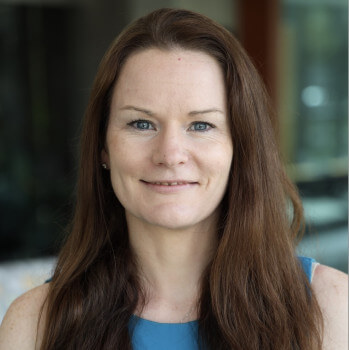

INTENDED AUDIENCE
- Practitioners
- Researchers
LEARNING OUTCOME
- Understand how these tools were developed
- Utilize available tools
- Understand how to interpret/report prediction outcomes
SOFTWARE TOOLS
- Docker
- R
- To be determined…
MAXIMUM NUMBER OF PARTICIPANTS
100
PRELIMINARY PROGRAM
Available soon
In this workshop participants will learn about the possibilities that the Y-chromosome has to offer within forensic genetics. The subjects will go well beyond what currently is routinely used in forensic practice as the latest innovations on the field will be discussed. The workshop will revolve around a hypothetical forensic case, in which different options and potential outcomes will be followed step-by-step. In the process various technologies and software tools will be discussed and demonstrated. All tools will be made available to participants together with data related to the “case” to enable participants to reproduce the results at their own convenience.
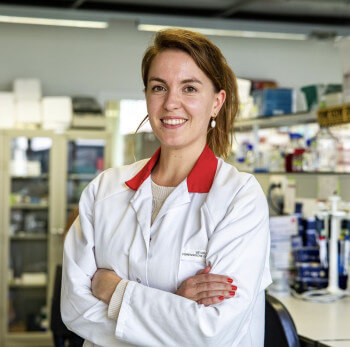

INTENDED AUDIENCE
-
Both practitioners and researchers
-
Some basic knowledge about the Y-chromosomal analysis is a pre, but not a must
-
Affinity with new technologies and methods is recommended
LEARNING OUTCOME
-
Participants will have a better understanding of cases where Y-chromosomal analysis can have benefits over more routine methodologies
-
Participants will learn about new (software) tools and strategies for enhanced Y-chromosomal analysis
-
Participants will gain knowledge on how Y-chromosomal analysis may further develop over the years to come
SOFTWARE TOOLS
-
Several state-of-the-art software tools will be demonstrated during the workshop
-
Documentation will be provided to use the software (if desired) outside of the workshop
MAXIMUM NUMBER OF PARTICIPANTS
50
PROGRAM
|
Time schedule (CEST) |
Subject |
|
(18:00h) 5 min |
Introduction of teachers |
|
5 min |
Introduction of the case |
|
20 min |
Y-SNP analysis and ancestry |
|
30 min |
Y-STR analysis and YHRD |
|
5 min |
Short Break |
|
30 min |
Familial searching and forensic databases |
|
20 min |
Long Break |
|
30 min |
RM Y-STR analysis |
|
30 min |
CSY seq |
|
5 min |
Short Break |
|
30 min |
Whole Y-chromosome analysis |
|
15 min |
Recap |
|
15 min (22:00h) |
Q&A |
Program WS 4 (pdf)
This workshop will explore the key concepts of ancestry inference and population assignment, with a focus on the different applications of biogeographic information in the population and forensic genetic fields. Participants will learn more about ancestry informative genetic markers. Through practical exercises, participants will work with commonly used software for ancestry analyses. Discussions will cover the impact of marker selection and reference population data on the results. The incorporation of biogeographic ancestry in forensic genetic cases - its advantages and limitations - will be addressed. The calculation of the weight of evidence in biogeographic assessments will be presented. Participants will be invited to discuss and interpret ancestry results in population and forensic genetic contexts.

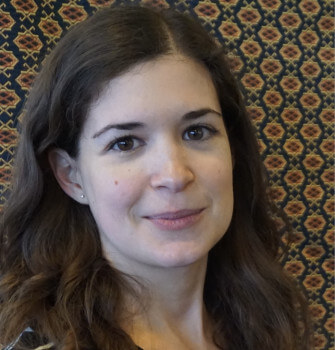
INTENDED AUDIENCE
-
Knowledge on basic concepts of genetics
-
Students with a background on biology or forensic genetics
-
Forensic geneticists
-
Interest in carrying out ancestry analysis for population genetic purposes
-
Interest in carrying out biogeographic population assignment for forensic purposes
LEARNING OUTCOME
-
Understand the concepts of ancestry inference and population assignment and their applications
-
Describe the types of DNA markers available to study ancestry, their advantages and limitations
-
Understand what is necessary to carry out ancestry analyses and the consequences the choice of markers or reference populations have in the assessments
-
Understand how to calculate the weight of evidence using biogeographic information
SOFTWARE TOOLS
-
Structure software
-
R software
-
Genogeographer
MAXIMUM NUMBER OF PARTICIPANTS
30
PROGRAM
|
Time schedule (CEST) |
Subject |
|
13:00h |
Introduction to ancestry inferences: concepts and markers and genotyping methodologies |
|
13:40h |
Ancestry prediction tools. Using the Structure software: underlining methodology (models and parameters) |
|
14:20h |
Structure: Practical exercise |
|
14:30h |
Break |
|
14:45h |
Structure: Practical exercise results discussion |
|
15:00h |
Principal component analysis (PCA) |
|
15:15h |
PCA: Practical exercise & results discussion |
|
15:35h |
Break |
|
15:45 |
Biogeographic Ancestry: concepts and tools. Using the GenoGeographer software: underlining methodology |
|
16:25h |
GenoGeographer: Practical exercise |
|
16:35h |
Break |
|
16:45h |
GenoGeographer: Practical exercise results discussion |
Program WS 5 (pdf)
The main objective of the workshop is to provide an understanding of the challenges in DNA matching and statistical analysis that are relevant for large-scale human identification. The success of DNA supported large-scale human identification depends on many factors (e.g. collecting and managing samples, DNA analysis methods, etc.). The interpretation of DNA results, database management and DNA matching are also crucial for any possible identification. We will focus on aSTR results and show an example of a DVI scenario by using Familias.
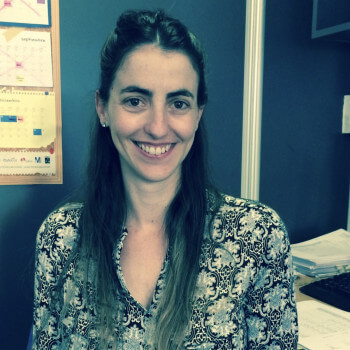
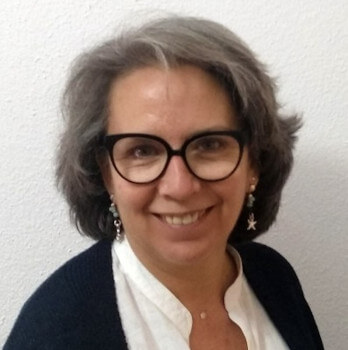
INTENDED AUDIENCE
-
Target: forensic geneticists who are interested in the identification of victims in large-scale scenarios
-
Requirements: basic knowledge of the statistical evaluation of DNA results (LR concept)
LEARNING OUTCOME
After the WS, the participants will be able to: (i) carry out comparisons of Post-Mortem (PM) vs PM data, (ii) evaluate Ante-Mortem (AM) pedigrees, (iii) perform simulations to know the informativeness of the reference pedigrees, (iv) perform comparisons of PM vs AM data, and (v) calculate the posterior probability of identification using different approaches (one to one, PM-driven, AM-driven, joint approach).
SOFTWARE TOOLS
We will show an example of a DVI scenario analyzed by using Familias software.
MAXIMUM NUMBER OF PARTICIPANTS
100
PROGRAM
|
Time schedule (CEST) |
Subject |
|
13:00-13:15h |
Welcome - Brief introduction: tips to understand formulas |
|
13:15-13:45h |
Complexity of DVI scenarios: Number of victims, individual vs. comingled human remains, closed vs. open scenarios, single vs. several related victims, primary vs. secondary graves |
|
13:45-14:15h |
Post-mortem profiles: problems (partial profiles, drop-out/in), types of comparisons (direct and kinship), false positives and false negatives. |
|
14:15-15:15h |
Ante-mortem profiles: pedigree check, non-conditional and conditional simulations, problems (distant relatives, errors in pedigrees, mutations, non-paternity events). |
|
15:15h-15:30h |
Break |
|
15:30-16:30h |
AM-PM comparisons: types of comparisons (direct and kinship), problems (false positives and negatives), Bayes theorem, prior probabilities, types of approaches (one to one, PM-driven, AM-driven, Joint approach) |
|
16:30-17:00h |
DVI Demo using Familias |
Although this workshop does not include practical exercises, a demo of a DVI scenario analyzed using Familias software will be shown at the end of the course.
The files used will be made available to participants so they can play the demo after the workshop if they wish. To do so, they will need to install the following software on their computers:
-
Familias 3, http://familias.no/english/download/ (preferably v3.3, released 2021-12-09)
-
R, preferably version 4.2.x or higher, https://cran.r-project.org/bin/windows/base/.
Please note that installation is typically only possible if you are the administrator on your laptop (this is required).
Program WS 6 (pdf)
Epigenetics is a relatively new but fast-developing field of research within forensic genetics. The increasing interest is mainly driven by the ability of epigenetic profiling to uncover the influence of ageing and various environmental factors on DNA. In particular, forensic DNA methylation studies so far have been developed to study tissue- and age-associated effects in forensically relevant tissues, or even individual differences between identical twins. These insights have been possible by the employment of DNA conversion techniques and a wide range of common but adjusted genotyping methods. However, consensus on research and method design, as well as data interpretation and reporting are still missing.
The workshop will be divided into four modules:
- Introduction: Basic concepts of epigenetics & DNA methylation
- Body fluid/tissue identification: markers & data interpretation
- Age prediction: markers, prediction models, challenges & possible solutions
- Towards personalized epigenomics: What does the future hold?
Each module will include both lectures and short exercises, enabling you to not only learn important aspects of this new forensic biomarker type, but also apply what you learn in practice. We will achieve this by incorporating quizzes, analyzing small-scale methylation datasets, evaluating age prediction models, and critically discussing the benefits and limitations of various forensic epigenetic applications.


INTENDED AUDIENCE
-
The workshop is suitable for forensic students, researchers and practitioners with an interest in learning how epigenetics can assist police investigations, for example via the increasingly popular age estimation of unknown individuals.
-
Basic knowledge on forensic DNA typing is essential, while previous knowledge or experience with DNA methylation profiling is not mandatory. Knowledge on common forensic DNA sequencing techniques, such as capillary electrophoresis and massively parallel sequencing as well as standard prediction modelling, such as linear regression is encouraged.
-
In the workshop we will provide you with basic knowledge on epigenetics, teach you how to understand DNA methylation data, and discuss together opportunities for future implementation in forensic casework.
LEARNING OUTCOME
After following this workshop, the participants will be able to:
-
Understand and describe the basic theory of epigenetics and DNA methylation
-
Employ DNA methylation profiling for body fluid/tissue typing and chronological age prediction
-
Illustrate and evaluate promising approaches for future phenotyping and individualization
SOFTWARE TOOLS
Microsoft Excel
MAXIMUM NUMBER OF PARTICIPANTS
100
PROGRAM
|
Time schedule (CEST) |
Subject |
|
8:00-8:10 |
Welcome & workshop aims |
|
8:10-8:25 |
Module 1: Introduction to principles & methods |
|
8:25-8:45 |
Online quiz followed by Q&A |
|
8:45-9.15 |
Module 2: Body fluid/tissue identification |
|
9.15-9.30 |
Data interpretation exercise |
|
9.30-9.45 |
Break |
|
9.45-10.25 |
Module 3: Chronological age prediction |
|
10.25-10.45 |
Age prediction model exercise |
|
10.45-11.00 |
Break |
|
11.00-11.30 |
Module 4: Towards personalized epigenomics |
|
11.30-11.50 |
Online quiz & plenary discussion |
|
11.50-12.00 |
Conclusion & workshop wrap-up |
Program WS 7 (pdf)
This workshop will focus on the availability of sequencing technologies and commercial kits, the laboratory procedures utilized to generate sequence data, first- and third-party software workflows for data analysis, best practices of reporting sequence data in forensic genomics, and basic analysis of Massively Parallel Sequencing (MPS) data with the STRait Razor Suite and FDSTools software will be demonstrated. Attendees will be instructed on the usage of primary (STRait Razor v3 and TSSV) and secondary analysis (STRait Razor Online and FDSTools) tools to analyze data from commercially available kits. Finally, recommendations will be provided regarding MPS Short Tandem Repeat (STR) allele nomenclature and some useful online resources will be introduced, including STRSeq, STRidER, and the Forensic Sequence STRucture Guide.
Attendees should have general understanding of massively parallel sequencing of DNA markers including, but not limited to, concepts such as DNA libraries, STR repeats, and single-nucleotide polymorphisms (SNPs).

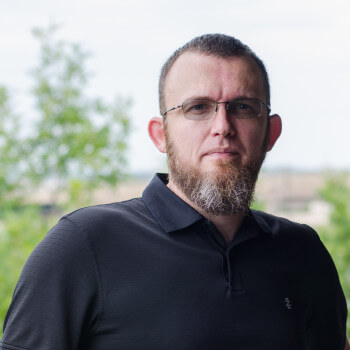
INTENDED AUDIENCE
-
Having an understanding of general constructs of DNA markers (e.g., STR repeats and SNPs)
-
Anyone with general interest in the use of MPS in the forensic field
-
No prior experience is required
LEARNING OUTCOME
-
Get an overview of sequencing platforms and (commercial) forensic kits available
-
Get a broad overview of the lab protocols and software workflows
-
Learn about sequence nomenclature, reported range,
compatibility with capillary electrophoresis -
Learn about online resources such as STRidER and STRSeq
SOFTWARE TOOLS
-
STRait Razor Suite
-
FDSTools
-
STRNaming
MAXIMUM NUMBER OF PARTICIPANTS
100
PROGRAM
|
Time schedule (CEST) |
Subject |
|
13:00-13:05h |
Hello, world |
|
13:05-13:20h |
Workshop Overview and Onboarding |
|
13:20-14:00h |
Sequencing Platforms |
|
14:00-14:15h |
Break |
|
14:15-15:00h |
Library Preparation Methods |
|
15:00-15:50h |
Data Analysis Software Overview |
|
15:50-16:00h |
Break |
|
16:00-16:35h |
STRNaming: STR Nomenclature and Compatibility |
|
16:35-16:50h |
Online Resources: STRidER and STRSeq |
|
16:50-17:00h |
Questions |
Program WS 8.1 (pdf)
This workshop will focus on employing the STRait Razor Suite and FDSTools software for analysis of Massively Parallel Sequencing (MPS) data. Attendees will be instructed on the usage of primary (STRait Razor v3 and TSSV) and secondary analysis (STRait Razor Online and FDSTools) software to analyze data from commercially available kits. Additionally, guidance will be given for modifying the default settings, developing configuration files for both primary and secondary analysis of laboratory-developed tests (e.g., in-house PCR multiplex assays), and considerations for further processing the output. The strengths of and rationale behind the different methods will be explored by examining the results. This way, attendees will gain a deeper insight into the powers and challenges (and solutions!) that arise from the application of MPS to forensic samples.
Attendees should be familiar with general constructs of DNA markers and formats of standard sequencing data storage file types (e.g., BED, FASTQ, SAM/BAM, etc.). While no formal familiarity with any programming languages (e.g., R, Python, etc.) is required, modification of open-source materials may require some basic understanding of computer programming.


INTENDED AUDIENCE
-
Having a general understanding of MPS raw output data (i.e., reads)
-
Preferably having prior experience using first-party analysis software (e.g., ForenSeq UAS or Ion Torrent Browser)
-
Understanding of the format and function of MPS workflow file types (e.g., BED, FASTQ)
-
General comfort or willingness to utilize command line interface to install and execute commands
LEARNING OUTCOME
-
Get hands-on experience analyzing MPS data with open-source software
-
Learn the process of alignment, bracketing of repeats, and visualization of reads
-
Learn how to analyze data generated with an in-house developed kit
-
Learn how command-line software can be used to automate data analysis workflows
SOFTWARE TOOLS
-
STRait Razor Suite
-
FDSTools
-
STRNaming
MAXIMUM NUMBER OF PARTICIPANTS
50
PROGRAM
|
Time schedule (CEST) |
Subject |
|
13:00-13:05h |
Hello, world |
|
13:05-13:40h |
General Introduction to MPS Data Analysis |
|
13:40-14:10h |
FDSTools: Getting Started |
|
14:10-14:25h |
Break |
|
14:25-15:05h |
FDSTools: Pipelining and Automation |
|
15:05-15:25h |
Creating Your Own FDSTools Noise Correction Database |
|
15:25-15:45h |
STRait Razor v3 Primary Analysis |
|
15:45-15:55h |
Break |
|
15:55-16:25h |
STRait Razor Online Secondary Analysis: UI Walkthrough |
|
16:25-16:45h |
Custom Analysis: Laboratory-Developed Assay Recommendations |
|
16:45-17:00h |
Questions |
Program WS 8.2 (pdf)
The aim of this workshop is to give a comprehensive introduction to Forensic Investigative Genetic Genealogy (FIGG). We will explore its history and legal aspects, along with a review of methods for SNP profiling and relationship inference. We will provide insights into genealogy DNA databases and tools for interpreting genetic matches. Theoretical presentations will be mixed with hands-on exercises. For latest updates and further information visit the website https://familias.name/ISFG2025 where links to presentations and exercises will be posted.
The first part of the workshop will focus on the following topics:
-
Overview of FIGG: A general introduction to FIGG and its evolution, overview of case types, legal and ethical aspects.
-
Establishment of SNP Profiles: Learn about methods to generate SNP profiles. This includes whole genome sequencing, hybridization capture techniques, microarray, and PCR amplicon sequencing.


INTENDED AUDIENCE
-
Forensic scientists in general
-
Interest in kinship statistics
-
No background knowledge other than basic forensic genetics
LEARNING OUTCOME
-
Basic understanding of F/IGG methodologies and workflows.
-
Develop SNP profiling skills.
SOFTWARE TOOLS
The below tools are handy during the course, but the workshop will be given without any requirement for software other than access to a web browser and internet.
-
Text editor (e.g. TextPad or similar)
-
R (or R Studio), https://cran.r-project.org/bin/windows/base/ (Any version)
MAXIMUM NUMBER OF PARTICIPANTS
100
PROGRAM
|
Time schedule (CEST) |
Subject |
|
6pm |
Brief introduction (Survey) |
|
6.15pm-7.30pm |
Overview of FIGG (incl exercises) |
|
|
Break |
|
8pm-9.30pm |
Establishing SNP profiles for FIGG purposes |
|
9.30pm-10pm |
Exercises and walkthrough |
More information and updates at https://familias.name/ISFG2025/
Program WS 9.1 (pdf)
The aim of this workshop is to give a comprehensive introduction to Forensic Investigative Genetic Genealogy (FIGG). We will explore its history and legal aspects, along with a review of methods for SNP profiling and relationship inference. We will provide insights into genealogy DNA databases and tools for interpreting genetic matches. Theoretical presentations will be mixed with hands-on exercises. For latest updates and further information visit the website https://familias.name/ISFG2025 where links to presentations and exercises will be posted.
This second part of the workshop will focus on the following topics:
-
Relationship Inference and Matching: Gain understanding in the underlying methods of inferring relationships and matching from the SNP data.
-
Genealogy: Insights into the genealogy DNA databases, tools, and sources for pedigree building, and interpreting genetic matches.


INTENDED AUDIENCE
-
Forensic scientists in general
-
Interest in kinship statistics
-
No background knowledge other than basic forensic genetics
LEARNING OUTCOME
-
Relationship inference techniques.
-
Enhance genealogical abilities to navigate databases effectively.
-
Gain insights into legal and ethical considerations in F/IGG.
-
Confirm hits and perform kinship testing using offline software
SOFTWARE TOOLS
The below tools are handy during the course, but the workshop will be given without any requirement for software other than access to a web browser and internet.
-
Text editor (e.g. TextPad or similar)
-
R (or R Studio), https://cran.r-project.org/bin/windows/base/ (Any version)
-
FamLink2 (version 2.5.1), available at https://famlink.se/f_download.html
MAXIMUM NUMBER OF PARTICIPANTS
100
PROGRAM
|
Time schedule (CEST) |
Subject |
|
6pm |
Brief introduction |
|
6.15pm-7.30pm |
Inference of relationships for FIGG purposes (Exercises and Solutions) |
|
|
Break |
|
8pm-9.30pm |
Genealogy (Exercises and Solutions) |
|
9.30pm-10pm |
Exercises, walkthrough and questions |
More information and updates at https://familias.name/ISFG2025/
Program WS 9.2 (pdf)
The study of pedigrees and genetic relatedness is central in forensic genetics. The aim of this course is to introduce the elegant statistical foundations of relatedness, as well as several forensic applications. In the basic course we focus on pedigree coefficients and likelihood ratios for kinship analysis. We introduce the QuickPed app for drawing and analysing pedigrees, and will also be using R for calculations and visualisations. Lectures and exercises are based on the book Pedigree Analysis in R (Vigeland '21).


INTENDED AUDIENCE
-
Case workers, students and researchers in forensic genetics
-
Requires basic knowledge of genetics and probability
LEARNING OUTCOME
-
Classical concepts and methods of genetic relatedness
-
Computation of pedigree coefficients
-
Kinship analysis and LR calculations
SOFTWARE TOOLS
-
QuickPed (https://magnusdv.shinyapps.io/quickped)
-
R and RStudio
-
pedsuite (https://magnusdv.github.io/pedsuite/)
MAXIMUM NUMBER OF PARTICIPANTS
50
PROGRAM
|
Time schedule (CEST) |
Subject |
|
8:00h |
Pedigrees and measures of relatedness |
|
9:00h |
Exercises I |
|
10:00h |
Break |
|
10:15h |
Kinship testing |
|
11:00h |
Exercises II |
|
11:45h |
Summary and discussion |
Program WS 10.1 (pdf)
The advanced session builds on the basic part, delving deeper into applications and implementations of pedigree analysis in forensic genetics. Main topics for this workshop include pedigree reconstruction and disaster victim identification.


INTENDED AUDIENCE
-
Case workers, students and researchers in forensic genetics
-
Requires basic knowledge of genetics and probability
LEARNING OUTCOME
-
Pedigree reconstruction
-
Disaster victim identification
SOFTWARE TOOLS
-
R and RStudio
-
pedsuite (https://magnusdv.github.io/pedsuite/)
-
Diviana (https://magnusdv.shinyapps.io/diviana)
MAXIMUM NUMBER OF PARTICIPANTS
50
PROGRAM
|
Time schedule (CEST) |
Subject |
|
8:00h |
Relatedness inference and pedigree reconstruction |
|
9:00h |
Exercises III |
|
10:00h |
Break |
|
10.15h |
Disaster victim identification |
|
11:00h |
Exercises IV |
|
11.45h |
Summary and discussion |
|
12:00h |
End |
Program WS 10.2 (pdf)
